Dragon Ball FighterZ has been phenomenally well-received on a wide scale, sparking the interest of long-time franchise fans, the general fighting game community, the esports scene, and casual players. Part of the appeal of the game is how well it committed to the aesthetic of Dragon Ball’s 2D origins as a manga and anime when bringing the franchise’s super-powered warriors to life. It featured imagery veritably ripped from comic panels and television episodes. The game’s developer, Arc System Works, successfully turned now-classic characters from Dragon Ball into playable fighters that battle with flare and style. The roster is filled with warriors who regularly defend the universe in Akira Toriyama’s original series, and those that oppose them—major antagonists like the galactic emperor Frieza, the demonic Majin Buu, and the bio-android Cell.
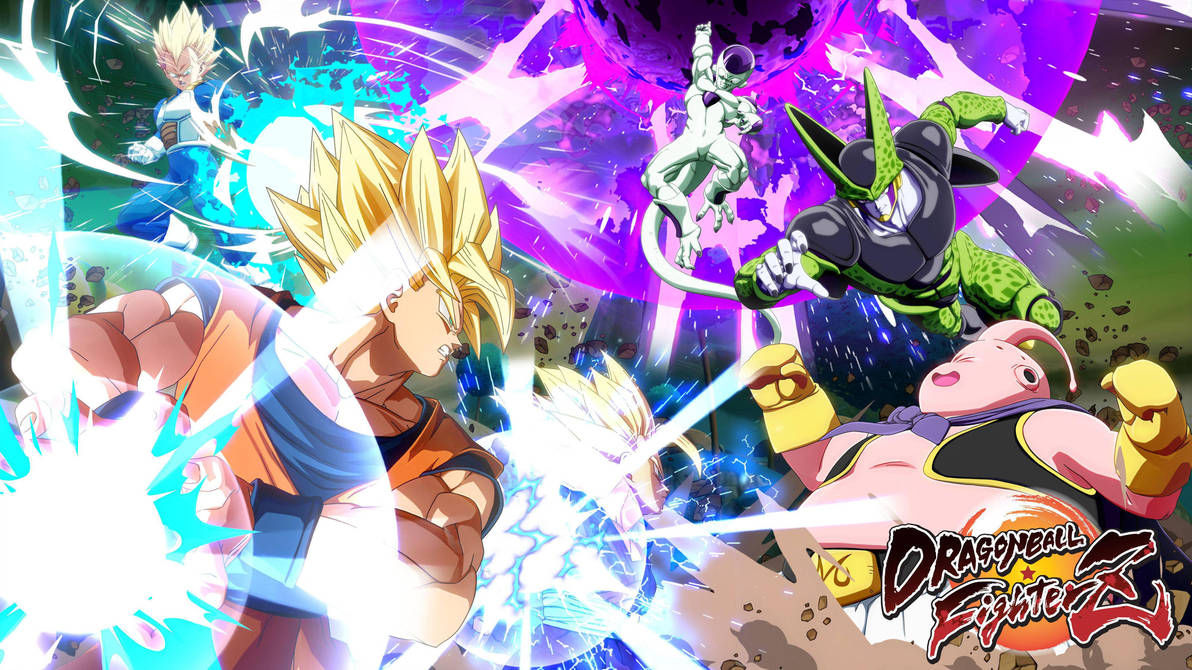
A promotional image of Dragon Ball FighterZ highlights Frieza, Cell, and Buu as challengers to other key warriors from Toriyama’s long-running and frequently adapted series.
Dragon Ball Z, the part of the original series that FighterZ draws heavily from, can be roughly broken down into arcs defined by these characters as individual endgame villains. They include the Frieza Saga, the Cell Saga, and the Buu Saga—and together they essentially comprise the entire run of what had been a major part of Dragon Ball, and what first made the franchise popular in North America. (There is also the Saiyan Saga preceding the Frieza Saga, with Vegeta as its endgame villain—until Vegeta gradually changes and joins Earth’s defenders.)
Frieza, Cell, and Buu continue to feature in a lot of promotional materials for the franchise. But while Frieza and Buu have continued to have some sort of presence in new television episodes, movies, and comic issues of Dragon Ball, Cell has largely stuck to the video game adaptations. He has appeared in over 50 titles across multiple consoles.
In a way, video games could be easier for Cell.
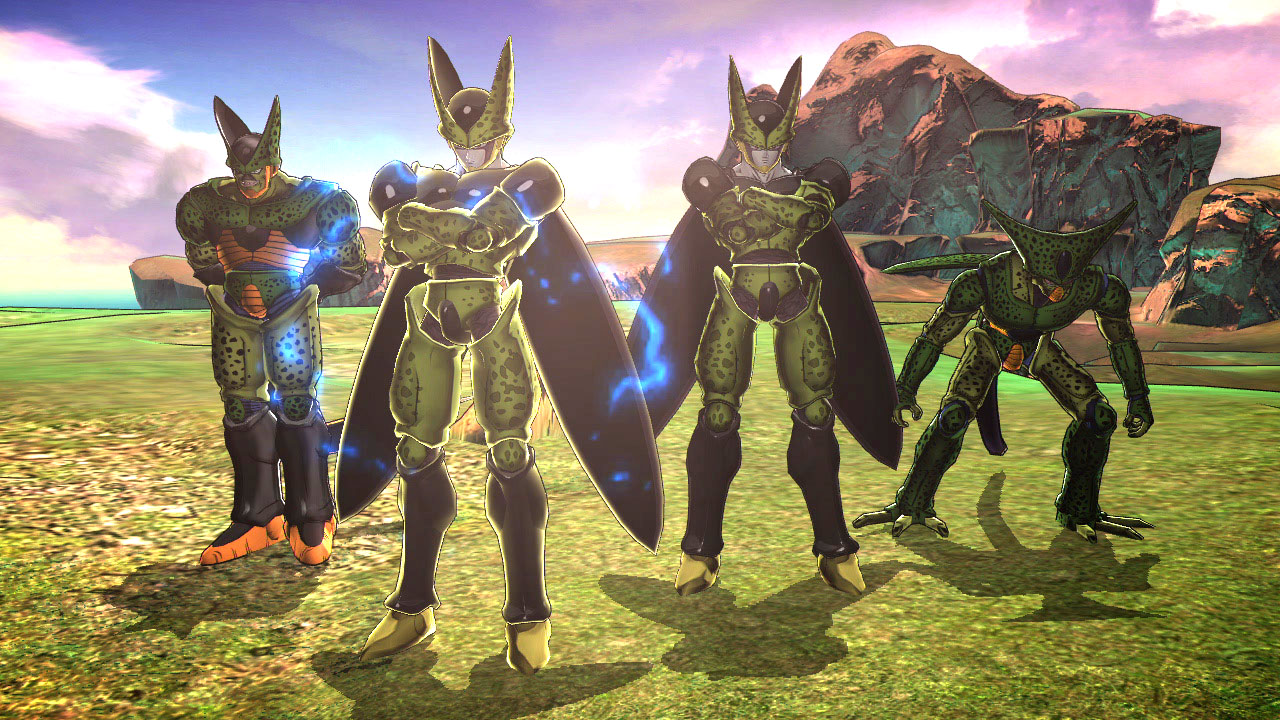
Like Frieza and Buu, Cell is a Dragon Ball antagonist that can transform into different forms, as demonstrated in this image from the 2014 game release, Dragon Ball Z: Battle of Z.
A Chimerical Mix of Detail
Cell could have possibly found a new life in games due to his more intricate and complicated design.
“Complex guys are terrible when you have to draw them for weeks on end,” Toriyama said in an interview for a book on the 30th Anniversary of Dragon Ball. “Cell was a ton of work, with those darn spots of his.”
The animators that adapted Toriyama’s work for the television series likely ran into the same issue.
Though the effort was huge, the result was worth it—Cell has an impressive, detail-packed design in Dragon Ball.
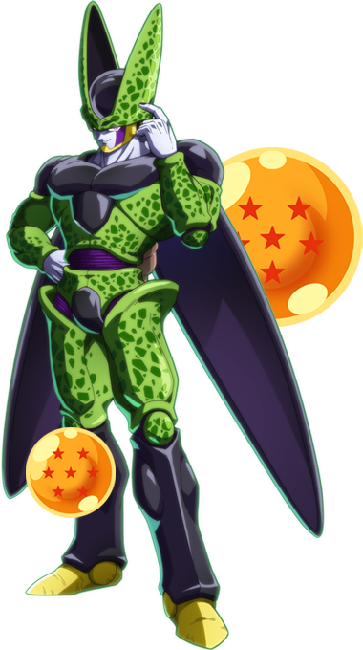
An image of Cell from Arc System Works’ Dragon Ball FighterZ.
Dragon Ball fan site Kanzenshuu reported that in the early ‘90s, an exhibition of Toriyama’s work was held in Japan. According to Kanzenshuu’s English translation of a catalog book written for that art show, French literature critic Daisaburō Okumoto favorably analyzed Cell’s design. He wrote it out in “Mechanisms, Beasts, and Reptiles,” one of the book’s essays.
Okumoto noted how the character’s design uniquely mixed traits from various creatures.
“In other words, within the awesome presence of Cell lies a skillful biotechnological synthesis, or rather a harmonization, of reptile, insect, and human,” Okumoto wrote.
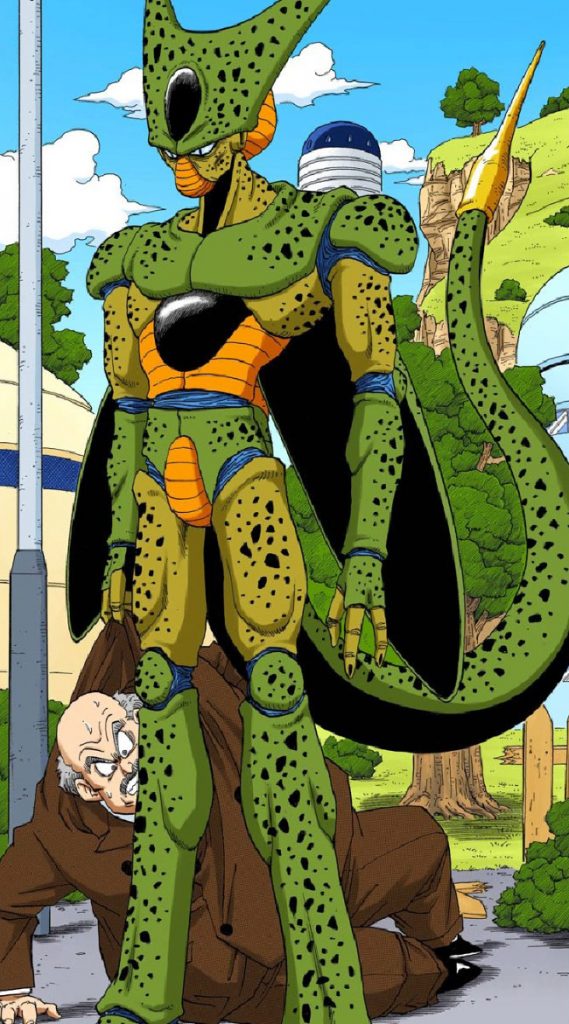
A color illustration of Cell as he first appears in the manga by Akira Toriyama.
Okumoto contrasted Toriyama’s chimera-like character with the “design flaws” of griffins and winged horses, other fictional creatures made through mixing the traits of different beings. To Okumoto, a winged horse “does not look like it could really fly” based on its anatomy.
“But there is no such feeling with Cell,” Okumoto wrote. “Toriyama imagines exotic yet visually balanced creatures and portrays them with such superb artistic skill that, aesthetically, they are totally convincing.”
Toriyama’s work with Cell’s design through an entire manga arc is an amazing accomplishment, given all the detail that had to be maintained through every panel of sequential art.
For the television adaptation, there may have been less consistency and even occasional drops in quality. This would have been due to the animation team and their varying skills and styles working together, instead of having one artist in charge of every drawing. But they still managed to translate Cell into some great displays of 2D animation for the series, and deserve praise for their work too.
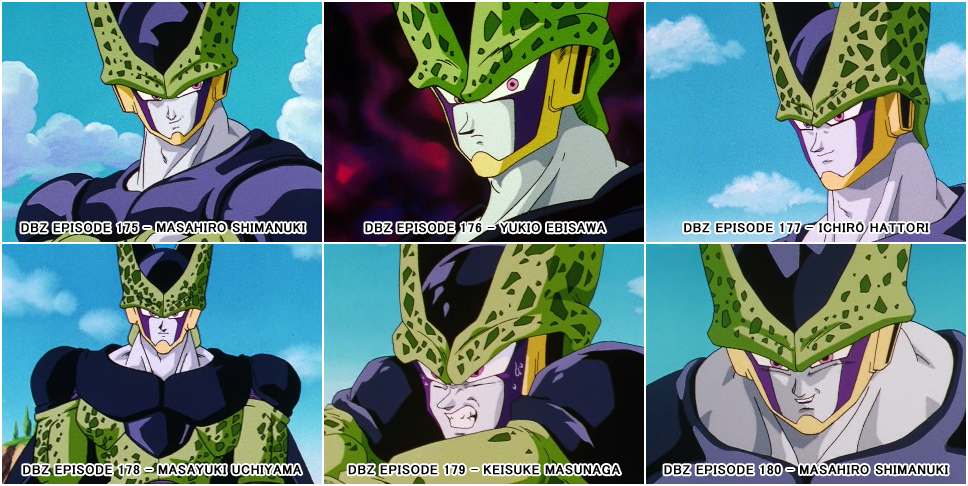
Kanzenshuu compiled screenshots of Cell to compare the styles of different supervising animators that worked on him during the anime adaptation of his arc: Masahiro Shimanuki, Yukio Ebisawa, Ichirō Hattori, Masayuki Uchiyama, and Keisuke Masunaga.
But it’s understandable that neither Toriyama nor other comic and animation artists are in a hurry to do that again for Cell in another long-form project, unless some technological advance made the process easier.
For now, the process for creating Cell is likely simpler with video games.
Translating a Complex Design
Toriyama and animators had to repeatedly draw each spot on Cell for comics and 2D animation. In a 3D game, a model of Cell can be made for animation, removing the need to re-create his spots multiple times.
FighterZ goes a step further, with cel shading on the 3D models of all the characters. This helps makes them the closest they have ever been to their original 2D counterparts, and perfectly renders every detail of Cell’s body.
In 3D modelling theres different kinds of shading. Flat shading, Smooth shading, Gouraud shading and Perfect Cell shading. pic.twitter.com/4WUTKeFLar
— Vani | 日本語勉強中 (@GrandAcademia) June 13, 2017
Though this process may have been less demanding than the work for the original manga and the anime, it still posed difficulties. The game’s director at Arc System Works, Junya Motomura, told Eurogamer more about creating the fighters.
“Customising [the game’s anime look] to match the visual style Dragon Ball has was a challenge for us,” Motomura said. “Getting the character models right and then animating them in the right way was also a big challenge.”
The creative team was never directionless though. Motomura explained that Arc System Works had an idea of how to capture the look of Dragon Ball‘s iconic anime incarnation by drawing from their previous work on the Guilty Gear franchise.
“But most of all, it was done through very talented animators and modellers that put quite a lot of time into making each character,” Motomura said.
In an interview with VG247, FighterZ producer Tomoko Hiroki talked about the game’s visuals. She shared that the art style first felt like it was really working during development on teen Gohan’s dramatic finish against Cell.
“After like weeks, months of adjusting, the first build that we received was Gohan’s,” Hiroki said. “When Gohan launches [the] Father-Son Kamehameha…so this is a 2.5D game, but the camera moves in this move are quite dynamic—and the visual is dynamic as well. That was the point where we finally thought we’d got to the point where we could satisfy the users.”
Motomura’s 2015 talk at the Game Developers Conference could shed even more light on the art style of FighterZ. During the conference, he talked about making 3D fighters look 2D in Arc System Works’ fighter Guilty Gear Xrd. Given that FighterZ is another 3D-made-to-look-2D anime-style fighting game from Arc System Works, much of Motomura’s conference talk could apply to their later adaptation of Toriyama’s iconic work.
A Thematic Match
Interestingly, Cell’s original story in Dragon Ball can be seen as having similarities to themes found in video games, even deconstructing them.
For instance, consider Frieza and Buu, who start off as the strongest fighters in their respective arcs. Probably the most video game-like quality they have is that they fit the classic final boss role, and they largely stay in that position.
In contrast, Cell doesn’t start out as the strongest. He begins his story physically incomplete and weaker than his enemies, and he must gather power to stand a chance. Cell’s progression to the final big bad of a Dragon Ball arc can be likened to the progression of a player going from level one to a late-game powerhouse.
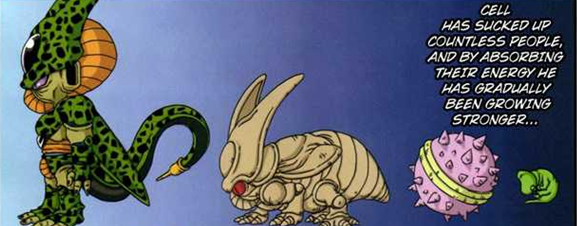
Cell in his incomplete form as featured in the spin-off manga Dragon Ball SD by Naho Ooishi, which focuses on a simplified retelling of Toriyama’s original story.
Cell devours humans for sustenance and strength, until he can consume other androids to become complete and gain a massive upgrade in power. That could be comparable to a player destroying minor enemies to obtain experience points, and doing this until they’re ready to defeat boss-type characters that will give them more XP and allow them to level up.

Cell absorbing androids to level up in Dragon Ball SD.
A Fitting Contender in Dragon Ball FighterZ
FighterZ has given the Dragon Ball franchise a game that’s a widespread success and a competitive hit. It earned a spot at last year’s Evolution Championship Series (Evo), a premiere fighting game competition. FighterZ received the most entrants at Evo 2018, and is scheduled to be a part of Evo 2019.
The game’s publisher, Bandai Namco, even held their own Dragon Ball FighterZ World Tour.
While Cell isn’t currently a part of Dragon Ball‘s latest manga, anime, or movies outside of cameos and promotional material, he’s done well in the franchise’s latest—and award-winning—game adaptation, seeing a lot of tournament play.
At launch the bio-android started out strong. IGN described him as a good starter character.
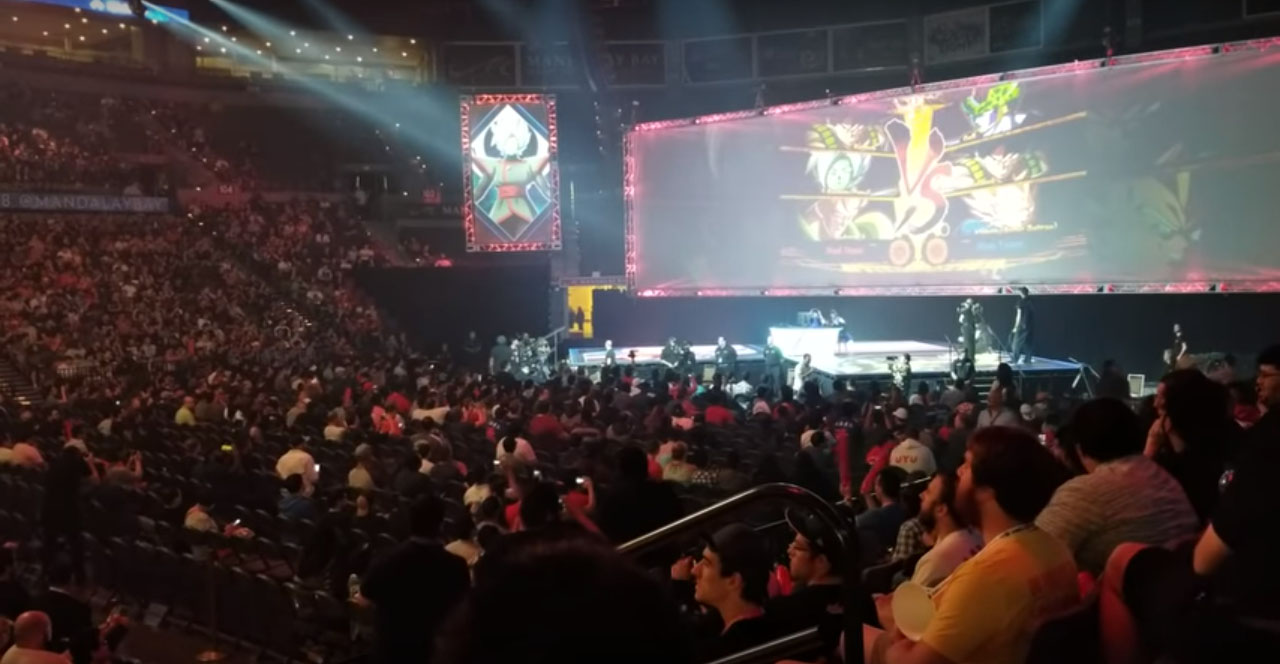
Dragon Ball FighterZ not only debuted in 2018, but also participated in their first Evo Championship Series. (Image Source: Screenshot from a YouTube video by GLHFtv posted on Aug. 5, 2018.)
According to Eurogamer, Cell was one of the most popular characters, and considered by some as either one of the best characters, or even the best character in the game.
Speaking with Eurogamer, Arc System Works’ Motomura said there was never the intention to design any one fighter as the strongest.
“But Cell being one of the more standard characters and a very straightforward in a way character, he was very popular from the beginning and was used a lot. Being used a lot means the character’s techniques and mechanics are developed quite early,” Motomura said. “That’s one of the aspects that makes him one of the stronger characters at the moment. We believe other characters can also get to his level if they have enough development.”
This felt particularly fitting, given that in the original series, Cell was not only a powerful warrior, but also someone who ended up with a history of close association with the idea of competition.
While originally Frieza was more concerned with brutally ruling the universe, and Buu proved more fixated on pure destruction, Cell paired sadism with a more distinct flair for competition. He wanted to test his skill and power against other fighters, and held a fight-to-the-death tournament for the fate of the planet.
(Though Frieza and Buu have been dragged into tournaments by this point for Dragon Ball Super—the latest series in the long-running franchise—those are recent developments and were not part of their original arcs.)
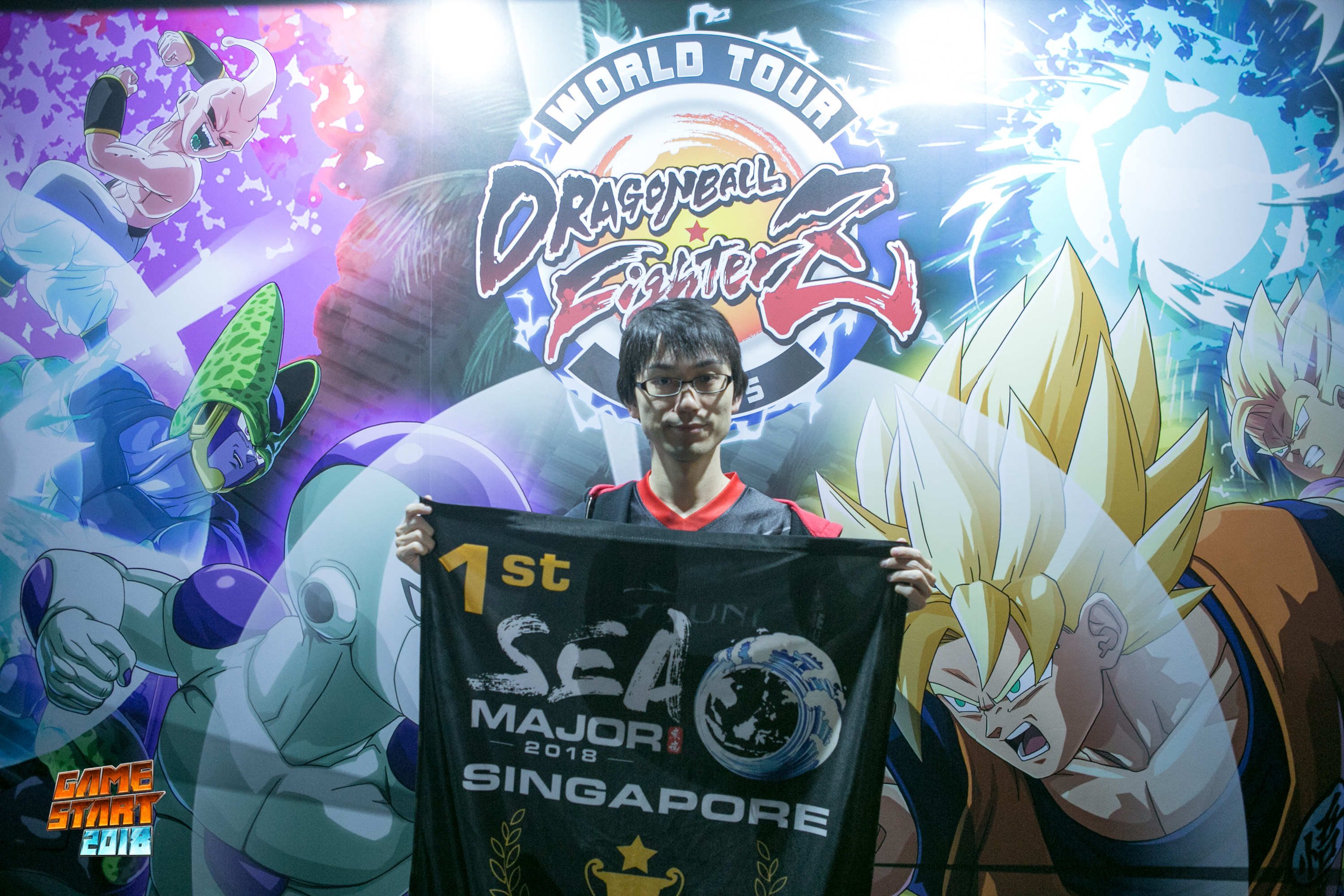
Ryota “Kazunoko” Inoue won the South East Asia Major 2018 in Singapore, the fifth qualifying event in publisher Bandai Namco’s Dragon Ball FighterZ World Tour. (This was his 2nd qualifying win.)
Given all that, it feels appropriate to then see Cell fare pretty well in terms of being selected to serve as a team member at various FighterZ tournaments.
The bio-android has been part of many teams for players in the competitive scene, including a role on Dominique “SonicFox” McLean’s roster during his journey to excel in the new game, and eventually become the FighterZ Evo 2018 champion. In fact, before making it to Evo, SonicFox selected Cell along with Kid Buu and Gotenks to form a new team after his previous lineup lost to rival FighterZ player Goichi “Go1” Kishida. Switching up his roster proved key to a comeback from that defeat, with the bio-android addition proving to be a particular “powerhouse” according to Kotaku.
There are even YouTube video compilations showing that crowds at Evo 2018 would join in with Cell’s battle cries during his introductory cinematics. Clearly, the character struck a chord with the FighterZ community.
Although SonicFox would not choose Cell again as part of what would prove to be his champion team at Evo 2018, the bio-android did make it to the tournament finals as a member of Go1’s roster, who ended up taking second place.
In fact, including Go1, Cell was a team member for five finalists at Evo—Shoji “Fenritti” or “Fenrich” Sho (3rd), Naoki “Moke” Nakayama (4th), Perry “KnowKami” Vinson (shared 5th with Ryota “Kazunoko” Inoue), and Steve “Supernoon” Carbajal (shared 7th with Tsutomu “Kubo” Kubota).
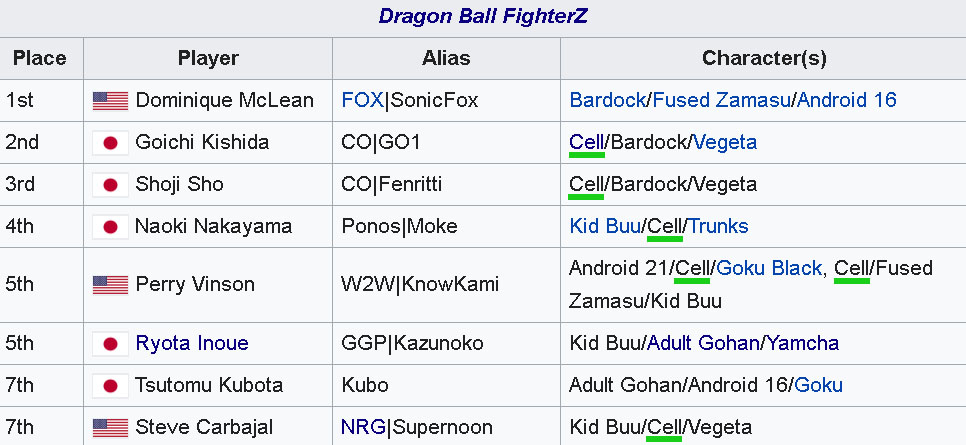
Dragon Ball FighterZ results at Evo 2018. (Image Source: Wikipedia.) The frequent uses of Cell as a team member have been underlined.
Cell was actually the most used character among the eight Evo finalists, with Kid Buu as a close second. (Cell: five times. Kid Buu: four times. Bardock and Vegeta: three times. Android 16, Adult Gohan, and Fused Zamasu: twice. Yamcha, Trunks, Android 21, Goku Black, Goku: once.)
But the competitive fighting scene is still evolving, and developers continue to give the game different patches that can affect character performance and player reception. Cell seems to be seeing less tournament play. For instance, during Bandai Namco’s FighterZ World Tour Finals in late January, only one out of the eight finalists had Cell on their team. But that lone competitor was Fenrich, who made it to the grand finals and won second place with a team composition of Bardock, Vegeta, and Cell—the same roster he had used to earn third place in FighterZ at Evo 2018.
The Future and Odds of a Multimedia Comeback
The latest video game iteration of Cell is not in an exclusive Dragon Ball adaptation, but in the crossover Jump Force. Super Dragon Ball Heroes World Mission should be the next purely Dragon Ball title that will include Cell, given that he’s been spotted along with many other franchise characters in that game’s trailer.
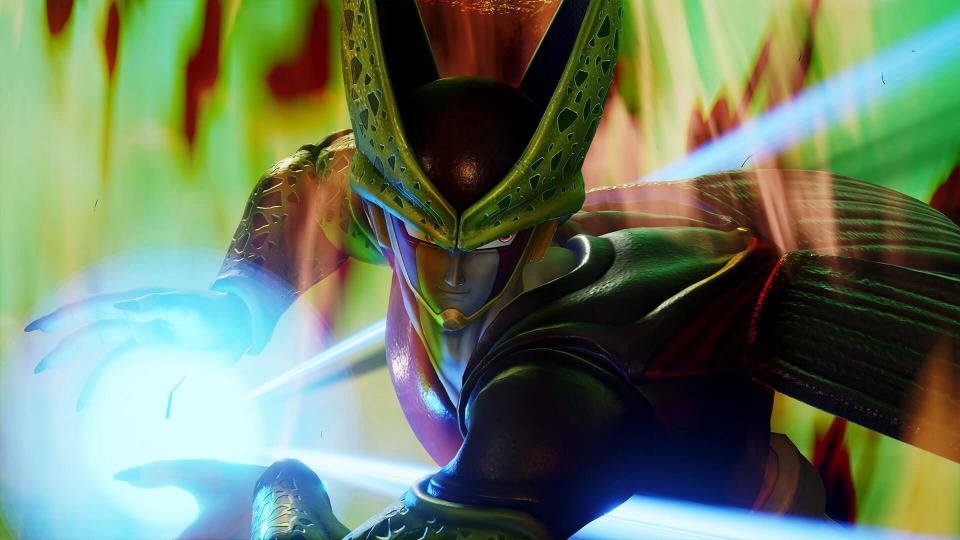
Cell as he appears in Jump Force.
The movie Dragon Ball Super: Broly proved to be a hit like FighterZ. It had a quick cameo of Cell during a montage of previous villains, and showcased brilliant 2D animation, as well as the use of computer graphics. The CG animation appeared to be cel-shaded, and resembled the art in FighterZ.
The movie’s use of CG could point to a possible technological development that might make Cell easier to animate for other forms of Dragon Ball media outside of games.
On top of that, there is a short bonus chapter from the Dragon Ball Super manga that features the return of the bio-android’s minions, the Cell Jrs. This might hint at eventually something more with the character in the future.
Either way, Cell has a long history with games, and is set to continue fighting in them.
https://www.youtube.com/watch?v=d3SPo-wftyc
Latest posts by Alyssa Wejebe (see all)
- From Fan Art to Film Crew: RJ Palmer Talks Detective Pikachu - September 4, 2019
- Women in Gaming: Borderlands 3 Mission Designer Kate Pitstick - August 20, 2019
- Equipping Your Emotions in Crystar - August 14, 2019
